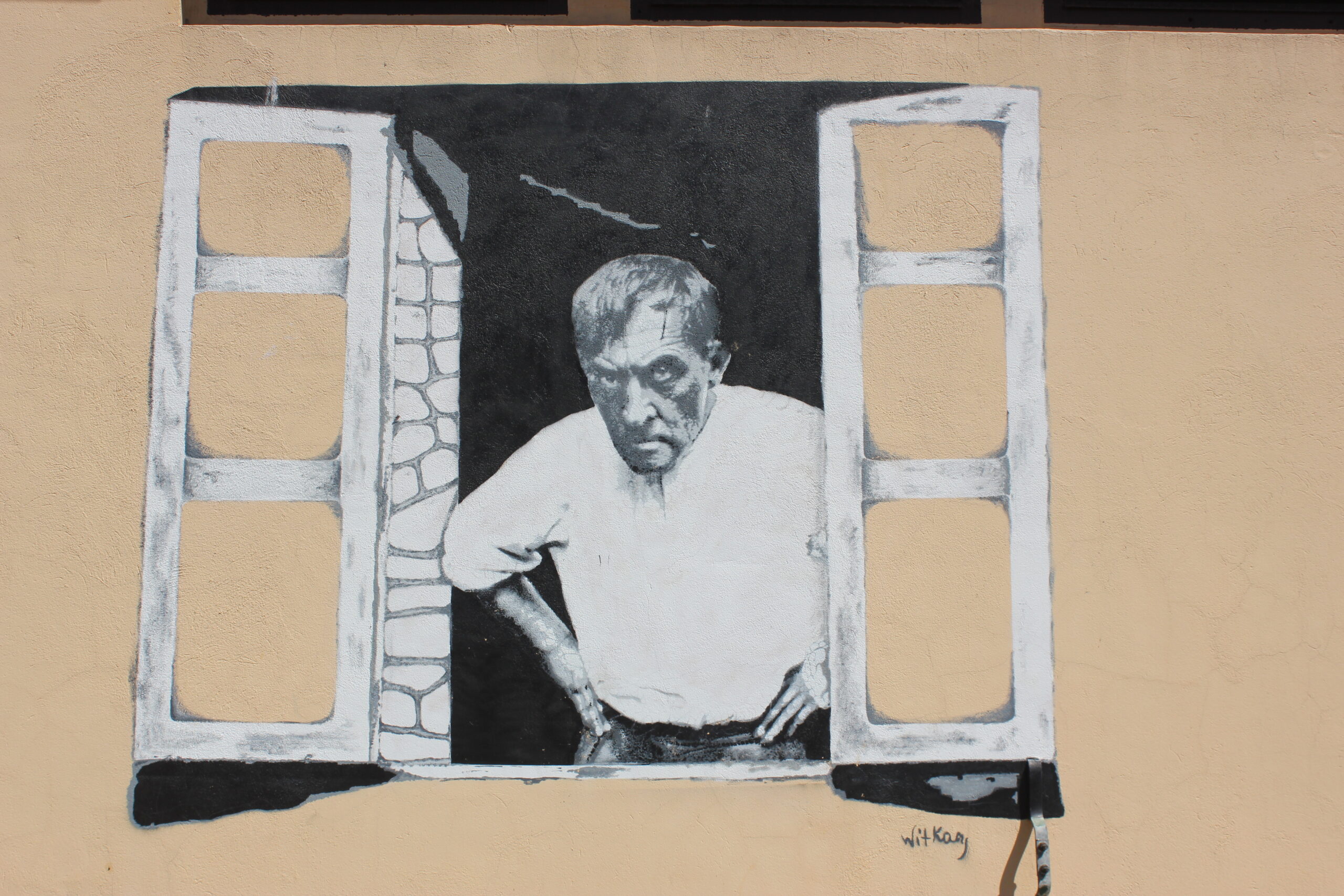By Filip Mazurczak
Anybody treating the title of 1,001 Books You Must Read Before You Die seriously faces an almost impossible challenge. But for those interested in Polish literature, tackling the nine works in this compilation that were originally written in Polish is far more feasible (the list also contains works by Joseph Conrad and Isaac Bashevis Singer, who were born and raised in Poland but wrote in English and Yiddish respectively).
The Polish books included in the collection range from historical fiction and short stories to dystopia and science fiction, including staples of school reading lists as well as less well-known choices. Here is an overview of their themes, context and adaptations.
Quo Vadis, by Henryk Sienkiewicz, 1896
This highly entertaining historical epic has been translated into more than 50 languages, making it the most internationally successful Polish novel. Numerous film adaptations have also been made, with the 1951 American version probably the best. Sienkiewicz acknowledged that he was inspired by another novel that would later be turned into a Hollywood movie, Lew Wallace’s Ben-Hur.
Quo Vadis is set in Rome during the rule of Nero, when Christians were thrown to the lions before crowds of cheering spectators in the Colosseum. Against this backdrop, the patrician Marcus Vinicius falls in love with Lygia, a beautiful Christian girl. He also becomes enthralled with the Christian ethical system, which preaches equality of all, including slaves.

A public reading of Sienkiewicz’s Quo Vadis in Łódź, 2016 (Zorro 2212/Wikimedia Commons, under CC BY-SA 4.0)
Sienkiewicz said that his intention in writing Quo Vadis was to present the contrast between Rome, materially and militarily powerful yet decadent and depraved, and the early Christian church, persecuted but morally edifying in its unwavering fidelity to the principle of love of one’s neighbour.
The novel has also been interpreted as an allegory for the Poles under foreign domination.
Pharaoh, Bolesław Prus, 1897
Prus’s tale of the rise to power of the fictional Pharaoh Ramses XIII and his struggle against his adversaries, especially the priests, was the favourite novel of Joseph Stalin, who saw it as a manual on attaining and maintaining power. Written amidst Russian censorship, Pharaoh was also a metaphorical treatment of the decline of the once-mighty Polish state in the late 18th century.
Jerzy Kawalerowicz’s film adaptation – shot in the sands of Uzbekistan and Poland’s own Błędów Desert – was nominated for Best Foreign Language Film at the 1966 Oscars.
Jerzy Kawalerowicz's @AcademyAward-nominated film 'Pharoah', adapted from the eponymous novel by Polish author Bolesław Prus, premiered #OnThisDay 55 years ago! 📽️https://t.co/UlMcruZ8Rd
— Culture.pl (@culture_pl) March 11, 2021
Ancient Egypt is only the background for a study of state power and the Machiavellian methods used to maintain it. Ramses XIII and his courtesans are both cruel and cunning. Their methods in their struggle for power include infanticide and getting opponents lost in labyrinths, from which it is nearly impossible to get out alive.
The priests, meanwhile, are also shrewd schemers: they convince the ignorant Egyptian commonfolk that a solar eclipse is the gods’ punishment against Ramses’ iniquity, thus rousing rebellion against the pharaoh.
Insatiability, Stanisław Ignacy Witkiewicz, 1930
Filled with plays on words, digressions, bizarre imagery, and constant arcane references to various European philosophers, this startlingly prescient modernist dystopian novel is quite a difficult read. However, if you like literary challenges and the names of authors like Thomas Pynchon or James Joyce do not make you run for cover, you just might enjoy Insatiability.
There has been a counterrevolution in Russia, which has been overrun by Chinese communists (the book was written 20 years before the actual communist revolution in China), who are nearing the Polish border.
In my #lockdown ennui I’m rereading “Insatiability” by Stanislaw Witkiewicz. Despite being written in 1927, it’s surprising contemporary
It traces the adventures of a young Pole whose own fate parallels the inevitable collapse of Western civilisation following a Chinese invasion pic.twitter.com/spUW1CfyiJ
— blakandblack (@blakandblack) July 27, 2021
The Chinese control the minds of their subjects through Murti-Binga pills, a concept reminiscent of “soma” in Aldous Huxley’s Brave New World, which was published two years later. In his classic study The Captive Mind, Czesław Miłosz borrowed this concept to describe how Polish intellectuals under Stalinist rule adapted to the lies in which they had to function.
All this is seen through the eyes of teenaged Genezyp Kapen, who comes from an aristocratic family, has signed up for military service amidst the looming Chinese attack, and is in the process of becoming a man as he takes part in bizarre sex and drug-filled orgies.
Witkiewicz, widely known in Poland as Witkacy, was a playwright, poet, novelist, painter of psychedelic art, narcotics enthusiast, portrait photographer, and one of the most influential and most colourful cultural figures in interwar Poland.
A soldier in the Russian Army who witnessed the Bolshevik Revolution first-hand, Witkiewicz was opposed to communism and all other forms of totalitarianism. Fearing that his dystopian nightmare had come true when the Soviets invaded eastern Poland on 17 September 1939, he took his own life.

A mural of Stanisław Ignacy Witkiewicz – better known as Witkacy – in Jarocin (Andrzej Otrębski/Wikimedia Commons, under CC BY-SA 4.0)
The Street of Crocodiles, Bruno Schulz, 1934
Known for his poetry-like prose and linguistic experimentation, Schulz is widely considered to be among the great 20th-century masters of the Polish language. A high school art teacher in Drohobycz (present-day Drohobych, Ukraine), he was also known as a visual artist and illustrator (he also designed the iconic cover art for Gombrowicz’s Ferdydurke, the next book on this list).
In the 19th century, oil was discovered in Drohobycz, which led to an economic boom. Schulz’s family owned a textile shop. His magical realist short stories in The Street of Crocodiles depict the lives of Drohobycz’s inhabitants, easily incorporating the surreal into the very mundane.
In “The Sanatorium Under the Hourglass”, for instance, a young man named Józef visits his father in a sanatorium where time literally moves more slowly than elsewhere: although his father is dead at home, he has not yet died at the sanatorium.
In “The Cinnamon Shops,” a young man goes with his parents to the theatre. When his father realises that he has forgotten his wallet, he sends the boy home. This ordinary errand quickly turns into a dreamlike nocturnal escapade during which a sentient horse leads the protagonist into a forest filled with magical sights and aromas.
In 1942 Schulz, a Jew, was shot by a Gestapo officer when walking from the “Aryan” section of Drohobycz back to the ghetto.
Ferdydurke, Witold Gombrowicz, 1937
In terms of subject matter, Witold Gombrowicz is a very Polish writer: his comic novels frequently poke fun at Poland’s traditions and national ethos (which occasionally leads to conservative protests against his work, which is part of the curriculum in Polish high schools). Reading Gombrowicz is therefore a helpful satirical guide to understanding the Polish spirit.
Among Gombrowicz’s novels, Ferdydurke is among the least hermetically Polish. A kind of Bildungsroman, or coming-of-age story, in reverse, it tells of 30-year-old Józio Kowalski, who is awakened one day by his former schoolteacher, Professor Pimko, and learns he must be a schoolboy once again.
Gombrowicz makes fun of education, which only infantilises us, as well as social conventions. He scoffs at the pompousness of the Polish aristocracy, but also at Polish liberals, as in a scene in which a “progressive” family encourages its teenaged daughter to get pregnant by a stranger, which according to them would be a sure sign of liberation from stiff culture mores.
At times insightful, biting, frustrating, and downright silly (a Polish critic called Ferdydurke “the rantings of a madman” upon its initial publication), the novel has been frequently adapted for the theatre (Jerzy Skolimowski’s 1991 film version was such a critical flop that it discouraged Skolimowski from directing for a decade and a half).
This Way for the Gas, Ladies and Gentlemen, Tadeusz Borowski, 1948
Tadeusz Borowski was a non-Jewish Polish poet who was sent to Auschwitz in 1943 after the Gestapo had found him and others at a liaison point of occupied Poland’s communist resistance, where he had gone to follow his girlfriend, Maria.
This Way for the Gas, Ladies and Gentlemen is not a memoir, but a collection of fictional short stories loosely based on Borowski’s concentration camp experiences (he was eventually transferred from Auschwitz to Natzweiler-Struthof in France and Dachau).
Books recommended by the head of our Research Center Dr. Piotr Setkiewicz:
Halina Birenbaum – “Hope is the last to Die”
Tadeusz Borowski – “This Way for the Gas, Ladies and Gentlemen”
Charlotte Delbo – “Auschwitz and After”
Viktor E. Frankl – “Man's Search for Meaning”
… https://t.co/rQJhcS1EP9— Auschwitz Memorial (@AuschwitzMuseum) February 4, 2021
Like Primo Levi’s classic If This Is a Man, Borowski’s prose presents a bleakly unsentimental view of camp life where there is no room for humanity, a world in which normal classical codes of ethics for human interaction, like the Ten Commandments or the Golden Rule, are inverted: prisoners must cheat, lie, steal, and kill to survive.
Borowski himself was faced with a diabolical dilemma: he was compelled to work on the unloading ramp at Auschwitz, directing prisoners to their death; had Borowski refused this labour, he would have been killed.
In one memorable scene, Borowski gives a slice of bread to a Jewish inmate on his way to be gassed. Can this be considered an act of compassion or a cynical gesture?
So shattered was he by his wartime experiences (as well as with his disappointment by the Stalinist regime, which touted his work) that Borowski took his own life at the age of just 28 by leaving the gas on in his kitchen.
Ashes and Diamonds, Jerzy Andrzejewski, 1948
Jerzy Andrzejewski’s novel is much less renowned than its film adaptation by Andrzej Wajda, widely considered to be a masterpiece by filmmakers and critics alike (Martin Scorsese counts it among his top ten, and the Village Voice rated it among the 100 greatest films of all time).
Despite being a rare example of a film adaptation that is perhaps superior to its source material, Ashes and Diamonds is worth reading to become familiar with the pro-communist literary aesthetic promoted by the regime and realise that for many Poles, the war did not end on 8 May 1945.
The novel tells of Maciek, a member of Poland’s underground resistance who is given an assignment to assassinate a local Communist Party boss in the city of Ostrowiec on the last day of World War II. In the meantime, Maciek falls in love with a barmaid.
Although Wajda’s adaptation presents Maciek as a kind of Polish Romantic hero, the novel is more consistent with socialist realist writing that presented the Polish underground as fascists; Andrzejewski’s Maciek is depicted as irresponsible, while his target, Szczuka, is a well-intentioned, innocent man.
Indeed, at this time Andrzejewski was a propagandist for the communist regime (this would later change; in the 1970s, he became an activist of the Workers’ Defence Committee, an anti-communist dissident group).
Solaris, Stanisław Lem, 1961
Stanisław Lem was perhaps the most successful science fiction writer who wrote in a language other than English, selling tens of millions of copies of his books worldwide. Solaris, which is also a love story and a psychological work open to Freudian interpretation, appeals to those who shun sci-fi fandom.
The novel has been adapted for the cinema twice: Soviet director Andrei Tarkovsky’s 1972 version and Steven Soderbergh’s 2002 production starring George Clooney. Lem himself was dissatisfied with both, although he felt the American one was more faithful to his vision.
The @NewYorker profiles Stanisław Lem, whose science-fiction and philosophical works on issues such as artificial intelligence, cybernetics and genetic engineering made him one of the most interesting, important and widely read writers of the 20th century https://t.co/O01cyzpdfw
— Notes from Poland 🇵🇱 (@notesfrompoland) January 9, 2019
Solaris tells of Kris Kelvin (one wonders if Lem used English-sounding names for his characters rather than Polish ones to increase his chances of international success), an astronaut studying the planet Solaris, where there is extraterrestrial intelligence not in the form of little green men, but of a sentient ocean that knows the fears, remorse, and desires of humans.
As Kelvin gets closer to Solaris’s ocean, he begins to have visions of his wife, whose suicide gives him feelings of guilt. He quickly begins to forget that this is not really his wife but the ocean playing with his mind.
Solaris’s themes of guilt and regret in human relationships give the novel a universal appeal that makes it much more than just a work of science fiction. In recent years, more attention has been given to Lem’s wartime experiences – born into an assimilated Polish-Jewish family that survived the Holocaust in Lwów, or today’s Ukrainian Lviv – as a key to interpreting many of the darker aspects of his fiction.
Throughout a six-decade career that produced more translated works than any other Polish writer, Stanislaw Lem adopted the viewpoints of aliens, robots, a conscious supercomputer and a sentient planet. https://t.co/JUMwBnCBJp
— The New York Times (@nytimes) August 12, 2021
The Beautiful Mrs. Seidenman, Andrzej Szczypiorski, 1986
The most recent Polish book on the list, this unforgettable novel features a web of both noble and iniquitous Poles, Jews, and Germans whose fates are tied together during World War II in Warsaw and whose motives are never clear.
The eponymous protagonist is a Jewish woman who is arrested by the Gestapo. A group of Polish boys who are infatuated with her as well as her husband’s employees try to free her with the aid of an ethnic German who has long lived in Poland and is immune to the Nazi ideology. Are the schoolboys driven by humanitarianism or simply lust?
Other characters include a Polish nun who has saved numerous Jewish children, believing that doing so was her Christian duty, yet is unable to completely free herself of her antisemitic prejudices, as well as one of the Jewish children she raises who renounces his identity and becomes a chauvinistic hater of Jews.
The novel ends on a stunning note, with the story of a Jewish woman expelled from Poland during the communist regime’s anti-Jewish purge in 1968. Witnessing Israeli soldiers violently breaking into a Palestinian home and beating its inhabitants, for a moment she feels satisfaction that after centuries of oppression the Jews are in charge, but quickly realises that this is the same ethnic hatred of the Old World, albeit in a new wineskin.
"In Poland, Jewish culture is the epitome of liminal: it is both omnipresent and distant.
This has led many intellectuals, including Tokarczuk, to become fascinated with Jewish culture…because it is both readily available and mysteriously hidden" https://t.co/r9heuk2L5R
— Notes from Poland 🇵🇱 (@notesfrompoland) February 5, 2022
Main image credit: Jakub Porzycki / Agencja Gazeta




















